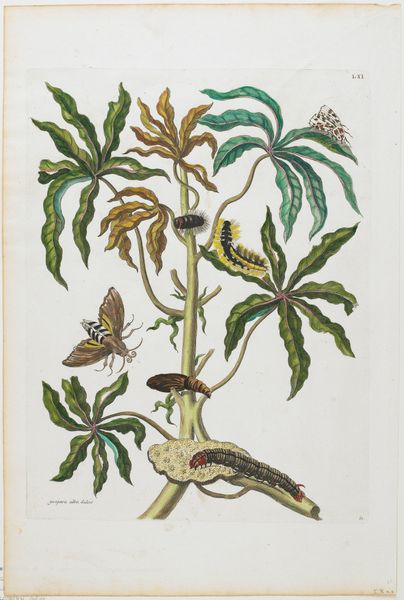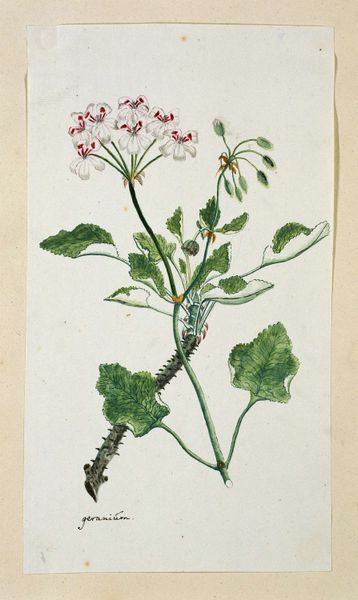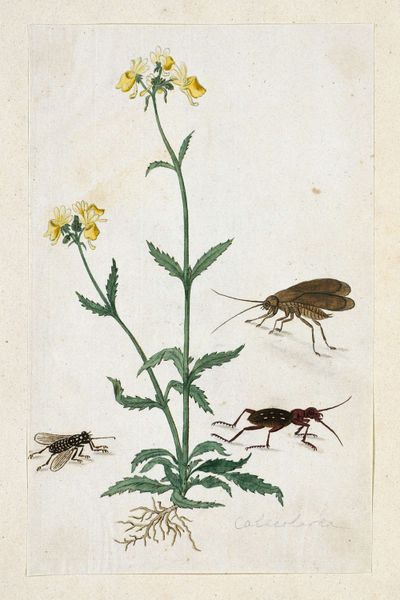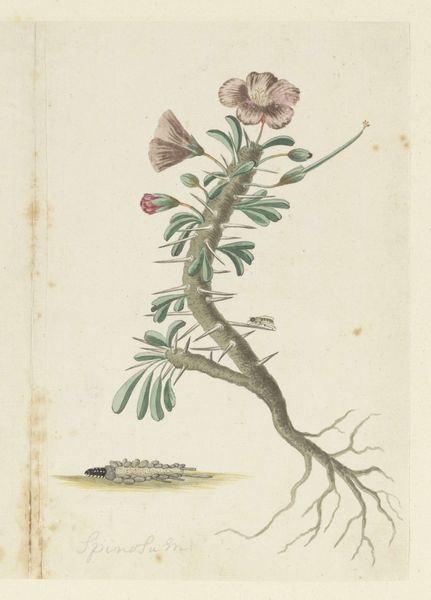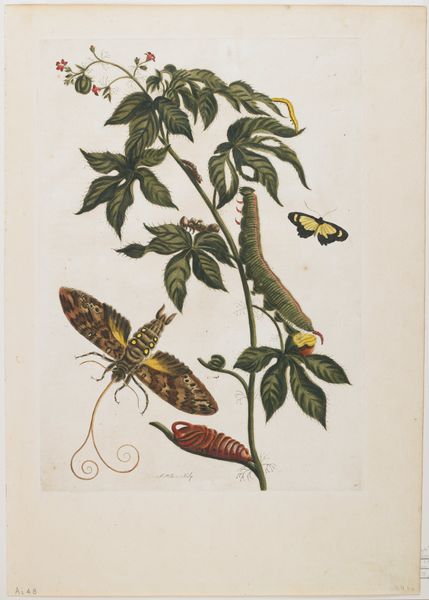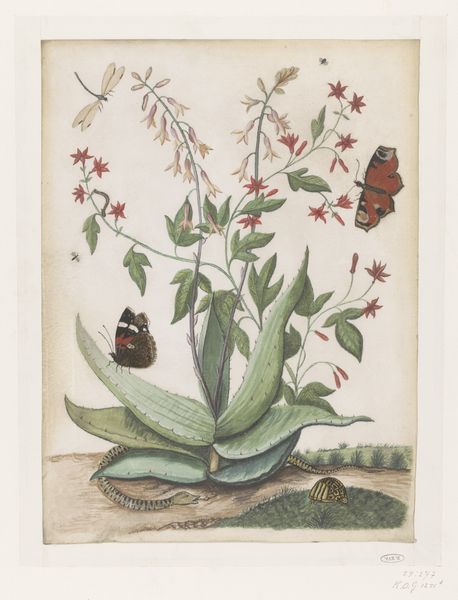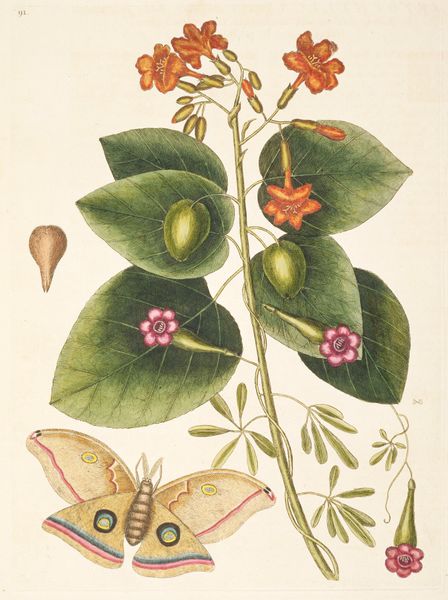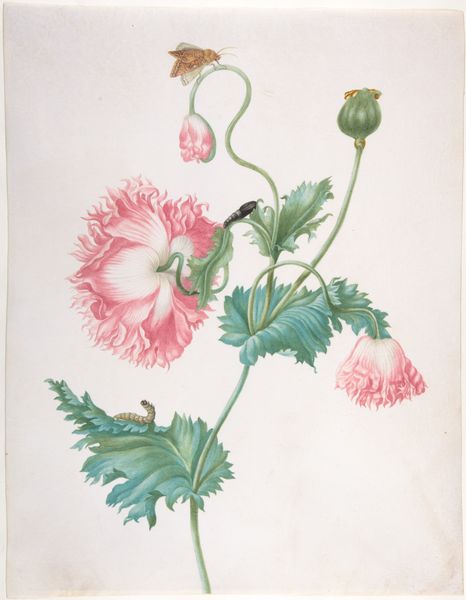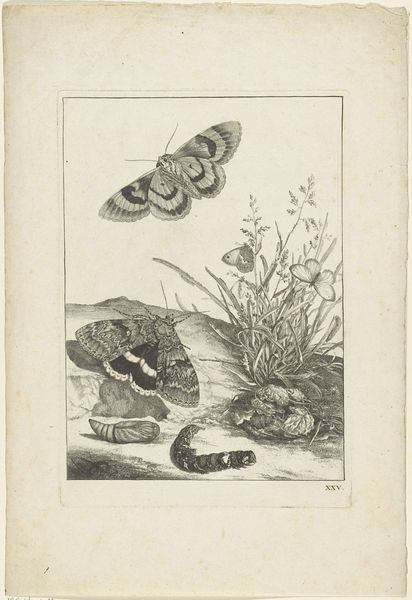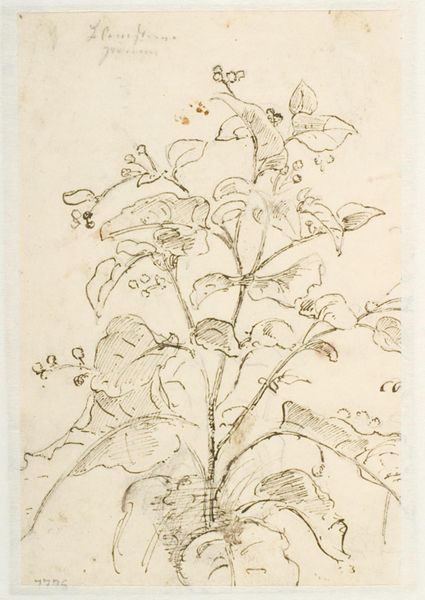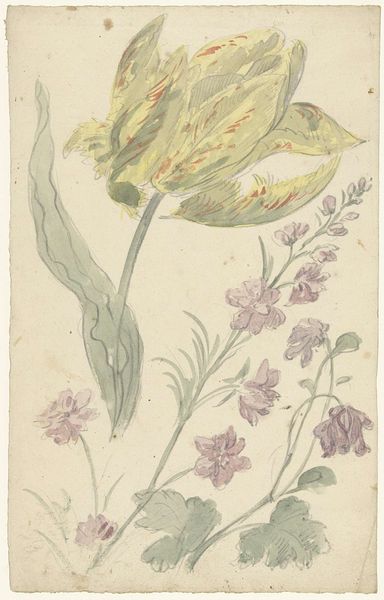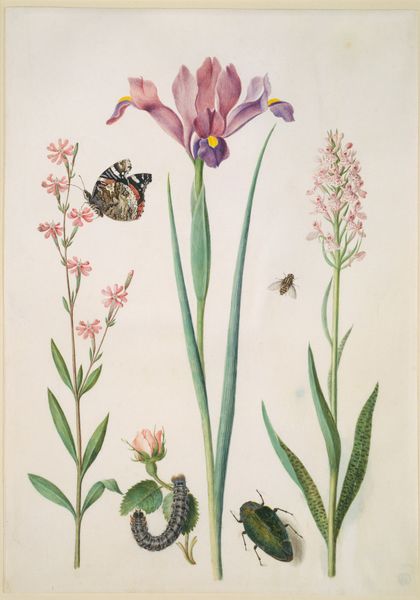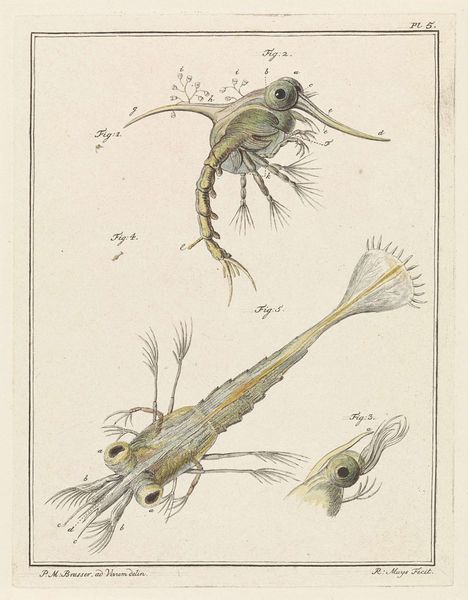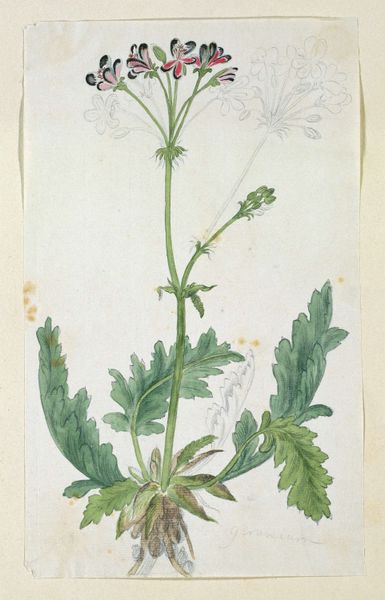
Pelargonium fulgidum L'Hérit, with a Gryllida (cricket) Possibly 1777 - 1786
0:00
0:00
drawing, watercolor
#
portrait
#
drawing
#
water colours
#
watercolor
#
watercolour illustration
#
botanical art
#
watercolor
#
realism
Dimensions: height 660 mm, width 480 mm, height 287 mm, width 192 mm, height mm, width mm
Copyright: Rijks Museum: Open Domain
Editor: So, this watercolor, “Pelargonium fulgidum L'Hérit, with a Gryllida (cricket)” is thought to have been made by Robert Jacob Gordon sometime between 1777 and 1786. It’s such a detailed botanical illustration. The use of watercolor gives it this light, almost ephemeral quality. What jumps out at you? Curator: The immediacy of watercolor invites us to consider the working conditions. Gordon wasn’t just depicting the plant and insect; he was capturing them within a specific socio-economic context. The availability of materials like paper and pigments speaks to colonial trade routes. Think about who had access to these tools and the knowledge to use them. Editor: So you are saying the artwork reveals more than just the appearance of a plant and insect, but tells of resources? It wasn’t just about aesthetics, it also shows who was able to get hold of pigments to record what they saw, is that right? Curator: Exactly. Consider the labor involved in creating the paper, harvesting the pigments, the division of labor that would've sustained Gordon's access to such refined goods. Also the role of the Gryllida (cricket). Is it purely observational, or does it suggest a commentary on the relationship between humanity and the natural world? Is nature exploited or valued for it's pure aesthetic appeal? Editor: I never thought about it that way. I tend to focus on the image itself, not what went into producing it. So really it shows the labour process behind it. Curator: It encourages us to explore these complex relationships of consumption. Ultimately how we decide which materials and resources are necessary and not, how those resources are made available for consumption or cultural record. Editor: I will never see botanical art the same way. Looking beyond just what’s represented to the complex history of production, access and the colonial narrative is an angle I have previously been naive to.
Comments
No comments
Be the first to comment and join the conversation on the ultimate creative platform.
